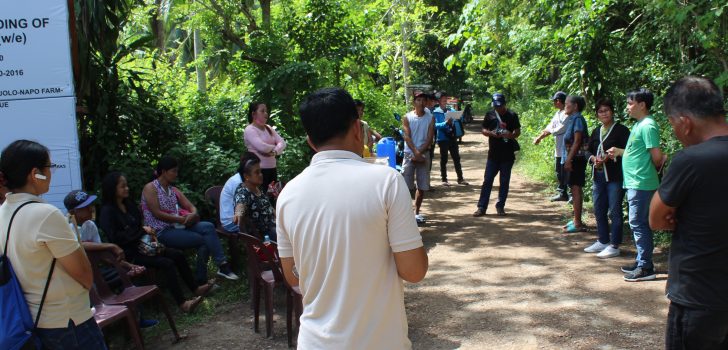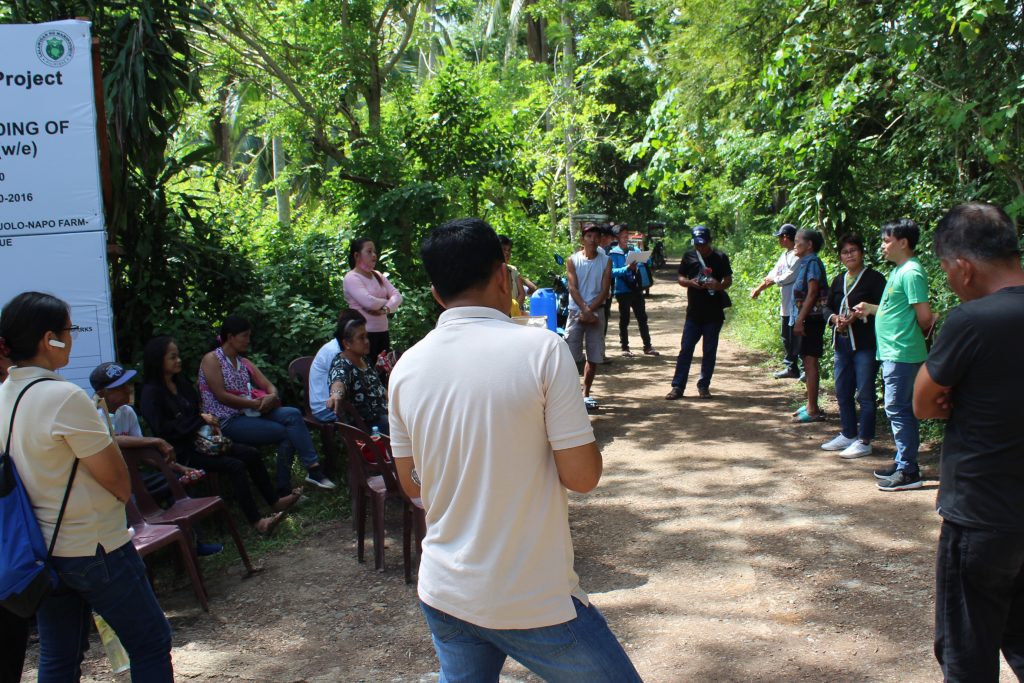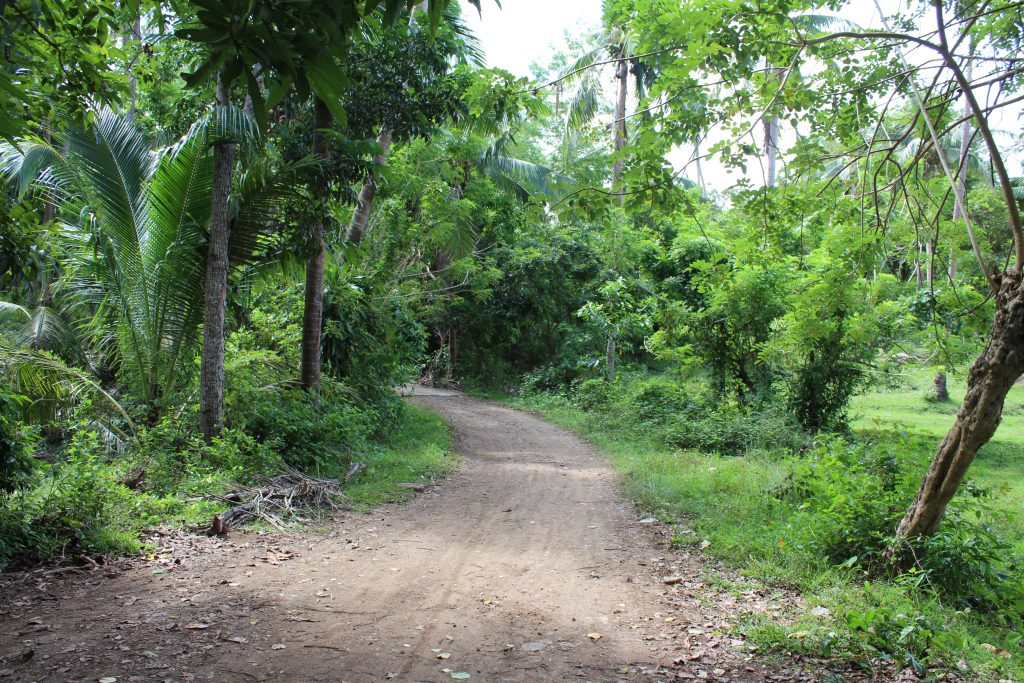 The Monitoring and Evaluation Unit under the I-SUPPORT Component led the Training on Citizen Monitoring with the beneficiaries and local residents covered by the barangays of Pantayin, Jolo, and Napo in Sta. Cruz, Marinduque.
The Monitoring and Evaluation Unit under the I-SUPPORT Component led the Training on Citizen Monitoring with the beneficiaries and local residents covered by the barangays of Pantayin, Jolo, and Napo in Sta. Cruz, Marinduque. Marinduque’s first FMR beneficiaries trained to use citizen monitoring tool
On February 11 – 14, 2020, the Monitoring and Evaluation (M&E) Unit of the Philippine Rural Development Project (PRDP) conducted its fifth Training on Citizen Monitoring throughout the MIMAROPA Region in the Province of Marinduque.
The Improvement/Upgrading of Pantayin-Jolo-Napo Farm-to-Market Road (FMR) is the first infrastructure-type subproject that will be implemented in Marinduque in the Municipality of Sta. Cruz. The intervention is worth P47.72 million and will cover 4.32 kilometers to provide a safe and convenient travel for its residents as well as increase mobility in the area specifically abundant in coconut.
The members of the Marinduque Provincial Project Management and Implementing Unit (MPMIU) joined the activity as well as the subproject’s beneficiaries from the different barangays who are the primary participants of the actual training.
The Citizen Monitoring Tool or CMT among subproject implementers is a capacitating venue to give stakeholders an introduction on how they can contribute in their own ways in the monitoring of the progress, quality, and timeliness of their subproject. Being the local residents and the end-users of these infrastructures, they have the responsibility to engage themselves for the betterment of their community. The goal of the CMT is to teach them how, with respect to subprojects funded by the PRDP in their area.
In particular, the participants of the training were taught about the CMT’s report system. A guide questionnaire, developed by the PRDP as well, was shared during the activity for a more comprehensive and efficient reporting of findings to the Provincial Government as the first responders of issues brought by the construction activities of the FMR.
For instance, the infrastructure aspect of the reporting defined the basic principles adhered by the Project in order to help beneficiaries identify clearly the negative, and even the positive features of the progress of their subproject and the activities happening around it.
An important part of this is the social and environmental safeguards which concerns the acquisition of right of way, settlement of project affected persons, cutting of trees, waste disposal, and worker safety. Among others, these are the kind of situations affecting the community and the environment that the Project wants to address the right and proper way.
In general, the CMT is designed to make sure that interventions aimed for agricultural development are in accordance with the Project standards in terms of its quality through the participation of its stakeholders. It gives beneficiaries and local residents the responsibility as well as opportunity to affect the execution of subprojects in a good way.
Because while they have the power to influence decisions, they are also reminded of their role more as a partner of the Project, including the contractors, and not as critics of every activity undertaken for their subprojects.
Since the first training on citizen monitoring in 2018, CMT remains to be relevant given now that the World Bank is always looking at the initial impact of its interventions. Impact assessment is not only done after subproject completion but also during construction. – Leira Vic Colongon, DA-PRDP MIMAROPA RPCO InfoACE Unit

The Monitoring and Evaluation Unit under the I-SUPPORT Component led the Training on Citizen Monitoring with the beneficiaries and local residents covered by the barangays of Pantayin, Jolo, and Napo in Sta. Cruz, Marinduque.

